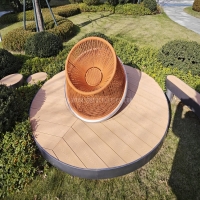Welcome to the website for landscape facilities products and knowledge.
How does the table’s design accommodate the use of virtual or augmented reality tools in meetings?
Contemporary conference table designs are fundamentally transforming how teams collaborate by seamlessly integrating augmented and virtual reality technologies. Unlike traditional tables, these innovative surfaces incorporate embedded sensors, projection systems, and connectivity ports that bridge physical and digital meeting environments. The tables feature strategically placed tracking markers that allow AR headsets to accurately map digital content onto the physical surface, enabling participants to manipulate 3D models as if they were physically present.
Many advanced models include built-in depth-sensing cameras that track hand gestures and physical objects, creating intuitive interfaces where users can reach into virtual spaces without controllers. The materials are specifically engineered to minimize glare and reflection that could interfere with AR/VR headset tracking, while subtle edge lighting provides visual reference points for spatial computing systems. Cable management systems are discreetly integrated to power VR stations, with wireless charging surfaces ensuring headsets remain operational throughout extended sessions.
The tables' modular design allows for reconfiguration based on meeting types—from theater-style VR demonstrations to roundtable AR collaborations. Transparent display panels can be activated to overlay data visualizations directly onto the table surface, while directional audio systems create isolated sound zones for mixed reality experiences. These design considerations effectively eliminate the traditional barriers between physical presence and digital participation, creating truly immersive meeting environments where remote colleagues can interact with shared content as naturally as those physically present around the table.
What sets these solutions apart is their ability to maintain spatial awareness across both physical and virtual domains. The tables maintain constant calibration with room-scale VR systems, ensuring digital objects remain anchored to specific table locations even as participants move around the space. This creates a persistent mixed-reality environment where annotations made in AR remain precisely positioned for subsequent meetings, effectively blurring the distinction between in-person and remote collaboration while significantly enhancing information retention and decision-making processes.
Related search:

Recommendation
Swivel chair-Specialty steel structure woven rattan leisure chair with rotatable design